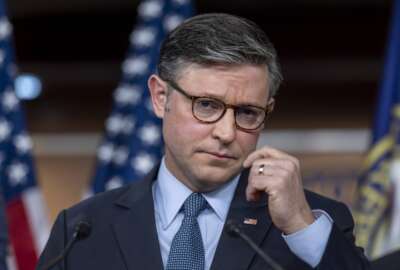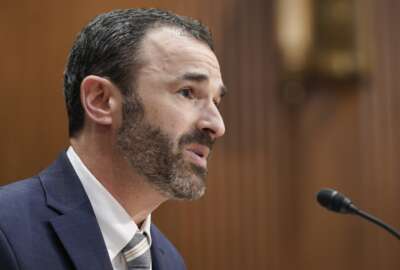OMB tells agencies how to deal with earmarks
Budget experts say memo is confusing
By Jason Miller
Executive Editor
FederalNewsRadio
The Bush administration has spent the last two years fighting against earmarks that are not debated or put in legislation.
President Bush issued an executive order in January requiring agencies to ignore any of these directives that are put in conference reports or other documents attached to legislation.
The continuing resolution lawmakers passed Sept. 30 is the first time this executive order will come into play.
An Office of Management and Budget spokeswoman says budget director Jim Nussle issued a memo to agency heads to address how to implement the executive order under the continuing resolution.
The spokeswoman says the CR includes more than $5 billion in earmarks that agencies will apply the guidance toward.
The memo gives agencies three stipulations that must meet to fund these earmarks:
- If the earmark was in the fiscal 2008 appropriation bill;
- If it would continue in 2009 and beyond;
- If the agency can spend the entire appropriation for the earmark in one year
If the earmark does not meet these requirements, the memo gives the agencies the ability to determine whether the earmark has merit and should be funded. The OMB spokeswoman says the executive order laid out the criteria for making merit or competitive decisions.
She adds that about $3 billion of the earmarks in the continuing resolution would be handled this way.
Federal budget experts say the memo’s timing as well as how it is worded is strange.
Stan Collender, managing director at Qorvis Communications and a federal budget expert, says the administration issued the memo for political reasons.
“This is a memo OMB put out for two reasons: No. 1, to reassert the President’s insistence that there would be no earmarks even though he signed on to as many or more than any other President,” he says.
“And No. 2, to provide agencies with a little protection. They can blame OMB for not spending earmarks.”
Adam Hughes, OMBWatch’s director of federal fiscal policy, says the memo is confusing because of the way it goes back and forth between the 2008 and 2009 spending bills.
“There are strict requirements for when to fund earmarks, but if it has merit don’t worry about our guidelines,” Hughes says.
“They can say whatever they want to from political rhetoric. The practical implementation of the memo is very small.”
Hughes adds that in some ways the memo puts agencies in tough position.
“They don’t want to [make Congress mad],” Hughes says. “They are the entity giving them funding year after year. But they also don’t want to raise ire of OMB.”
Collender says that the next administration likely will rescind the executive order and memo.
“You may see a continuing focus on earmarks, but you will not see them eliminated completely,” he says. “It would be contrary to almost 200, 250 years of American tradition.”
He adds the memo is a little too late and disingenuous because the Bush administration has been a huge user of earmarks to address their own priorities.
—
On the Web:
OMB – Earmark guidance (pdf)
White House – Earmark Executive Order
(Copyright 2008 by FederalNewsRadio.com. All Rights Reserved.)
Copyright © 2025 Federal News Network. All rights reserved. This website is not intended for users located within the European Economic Area.





